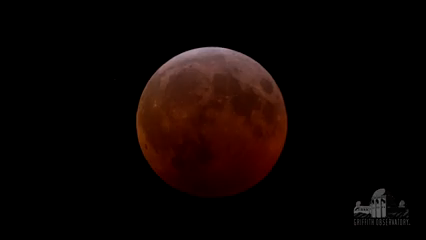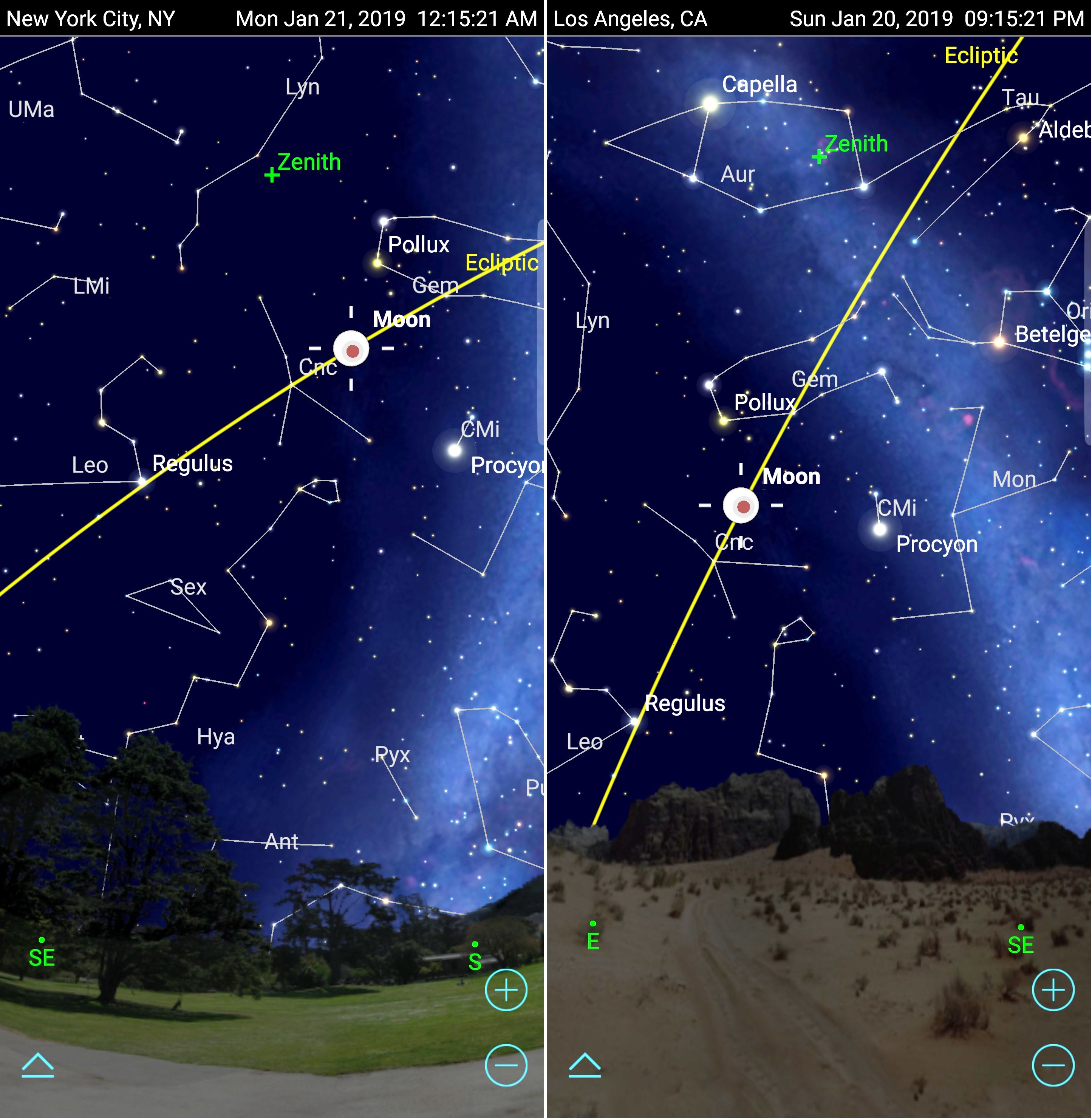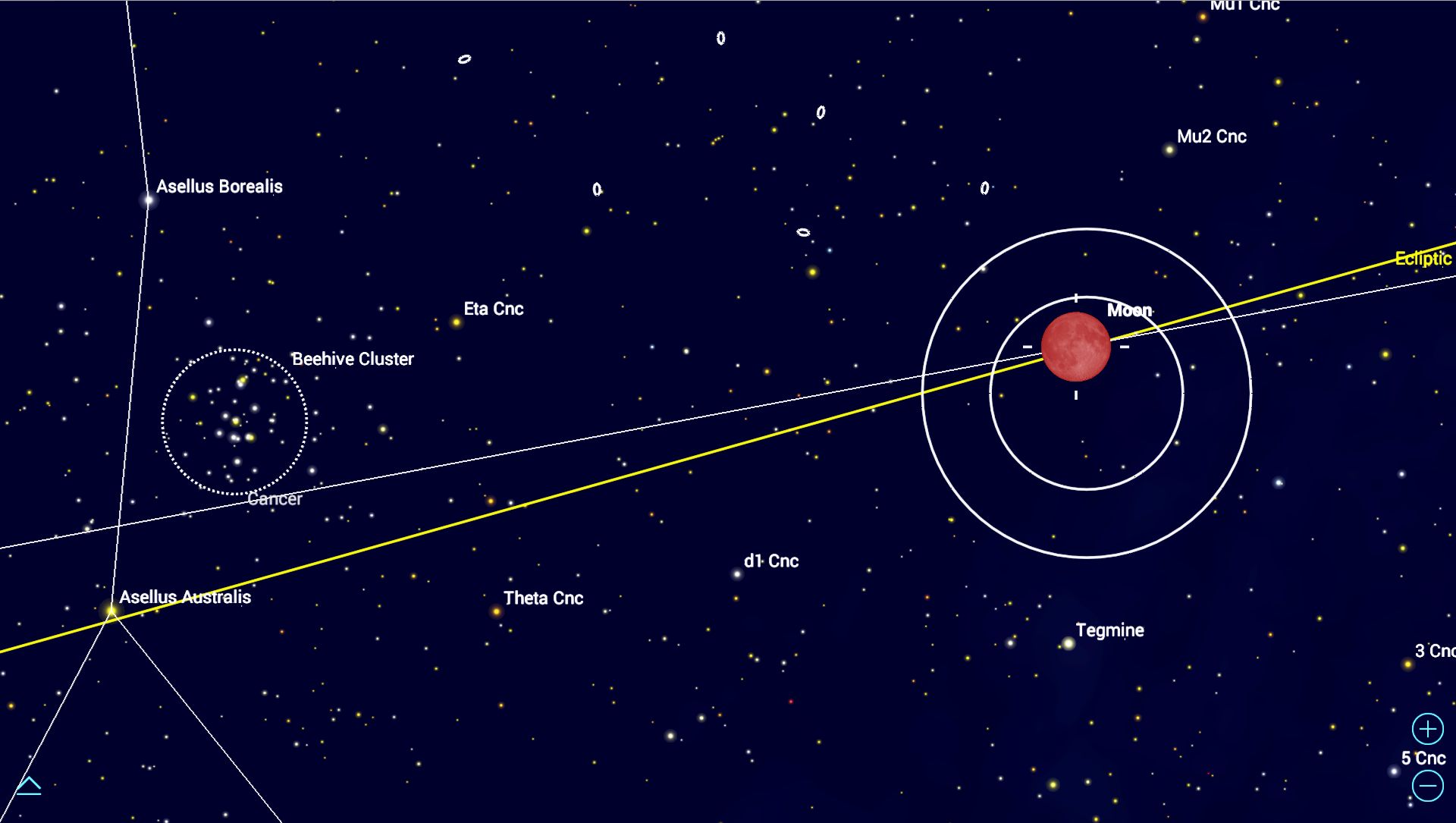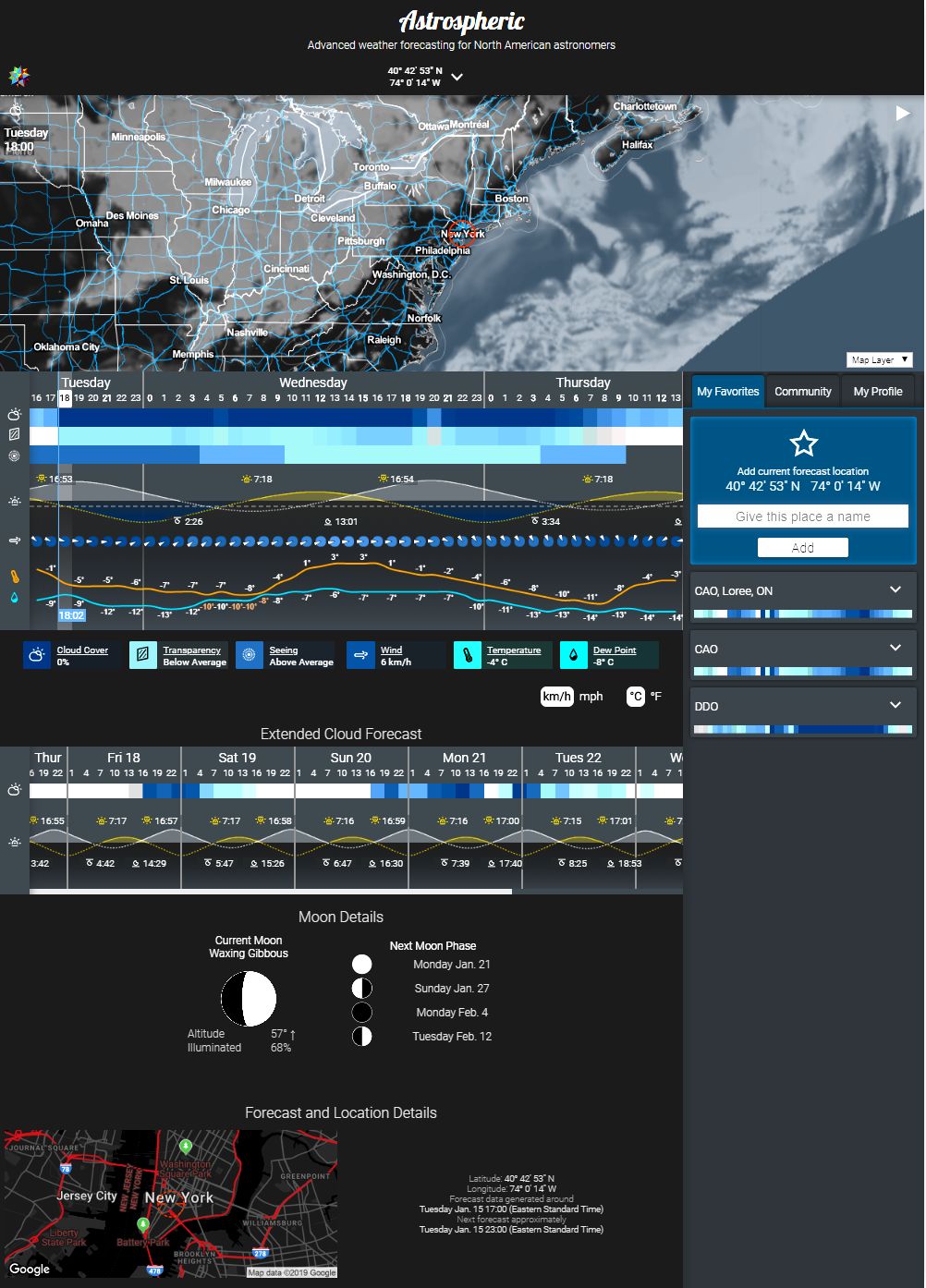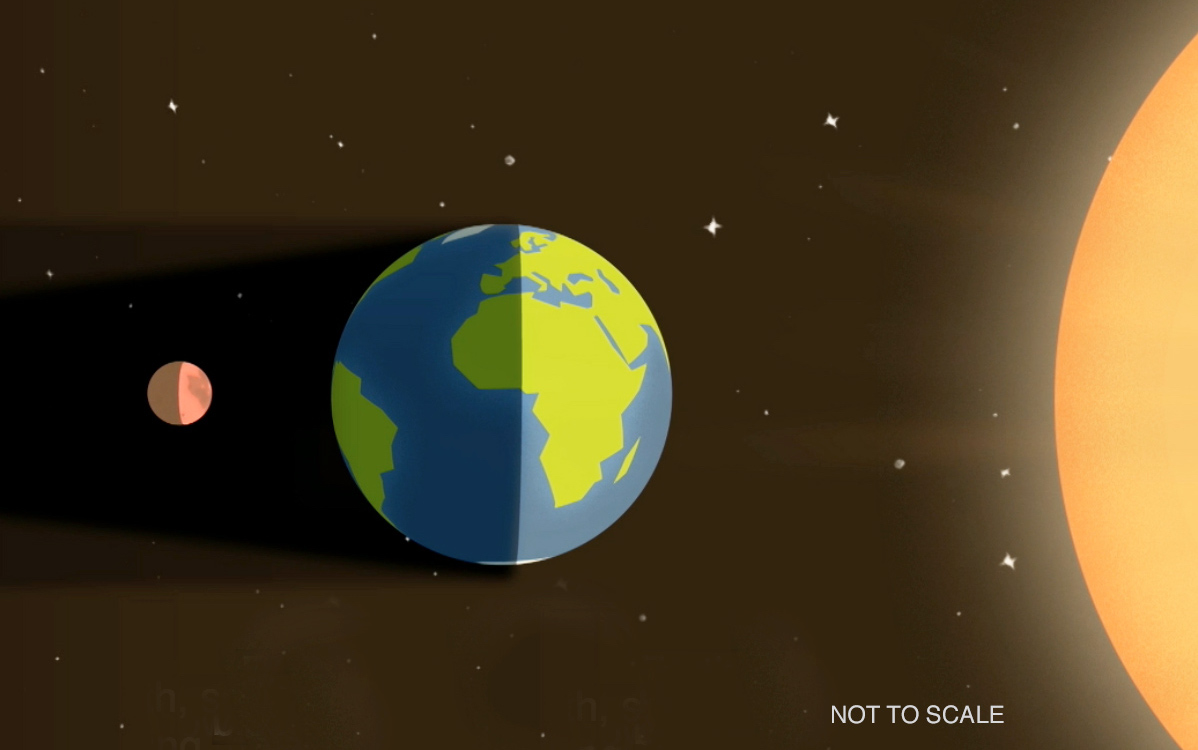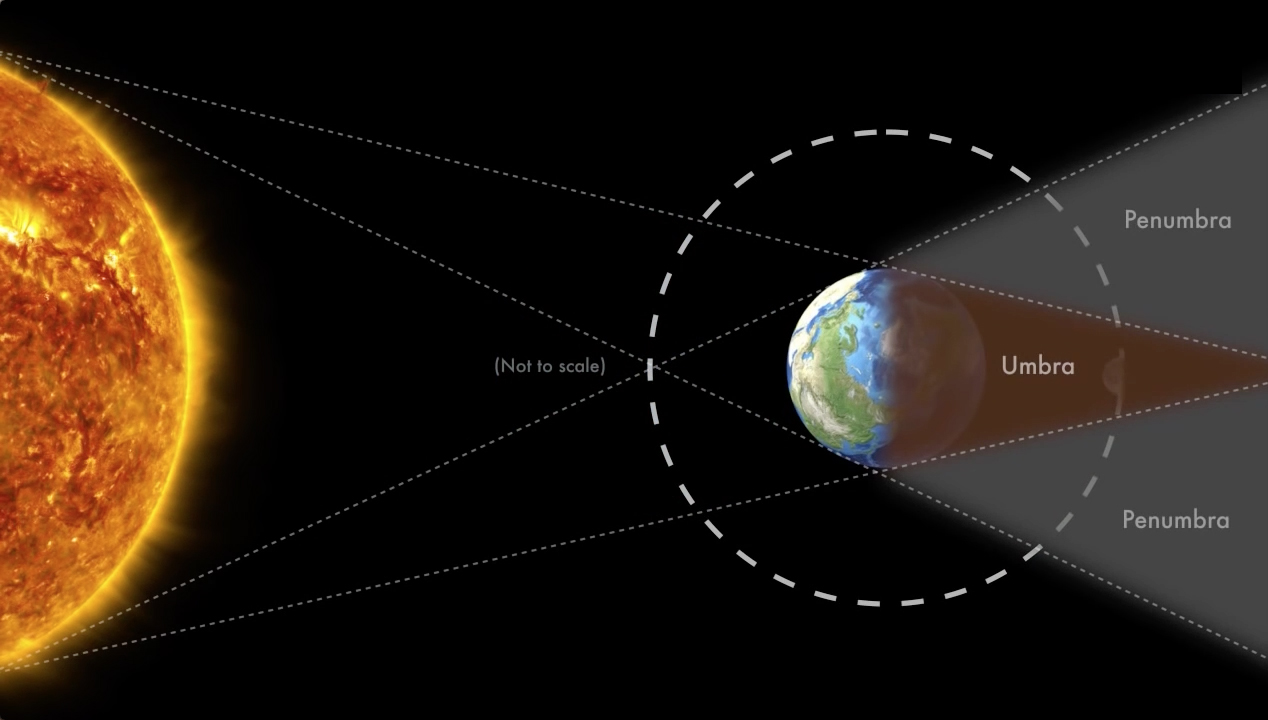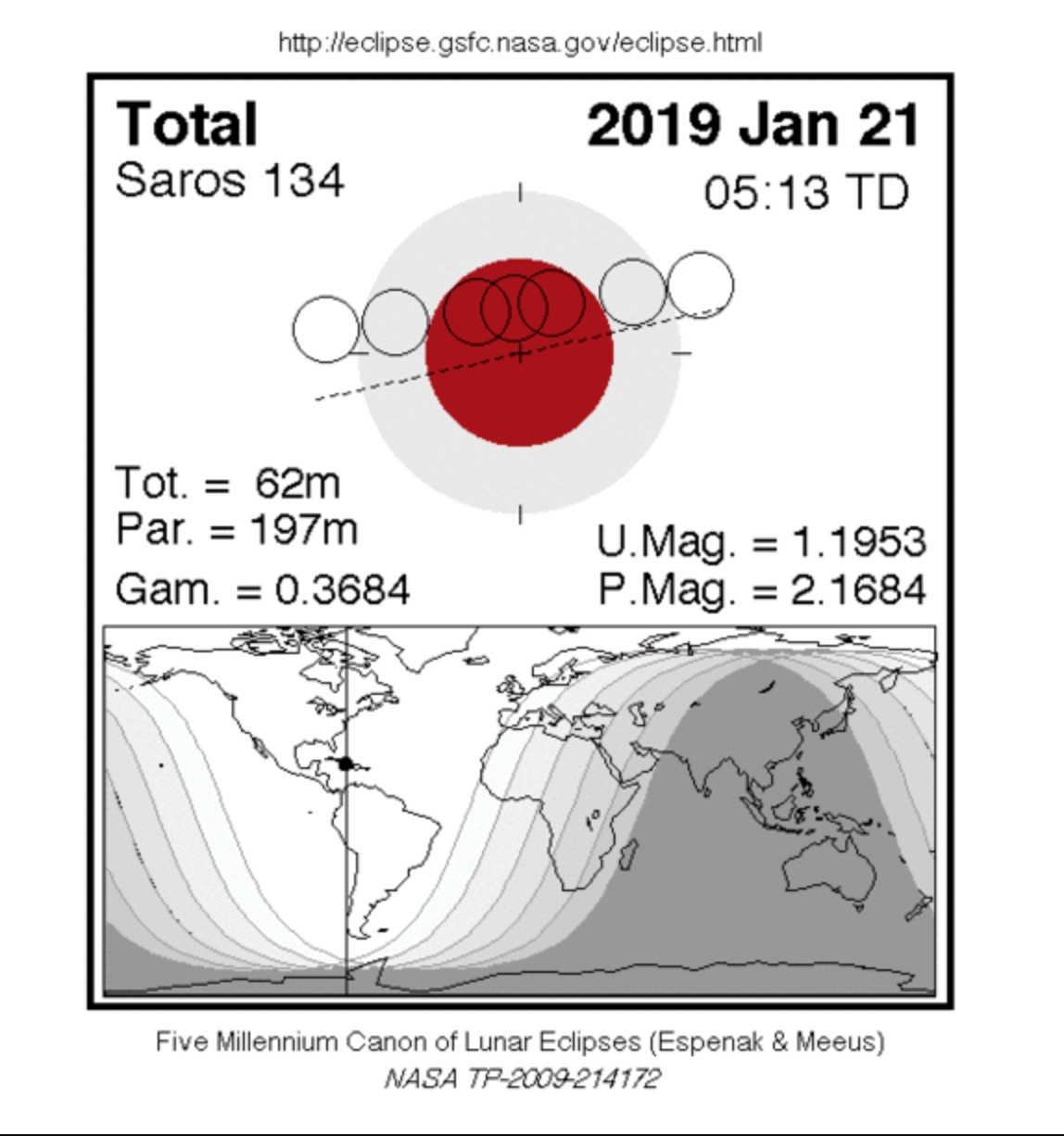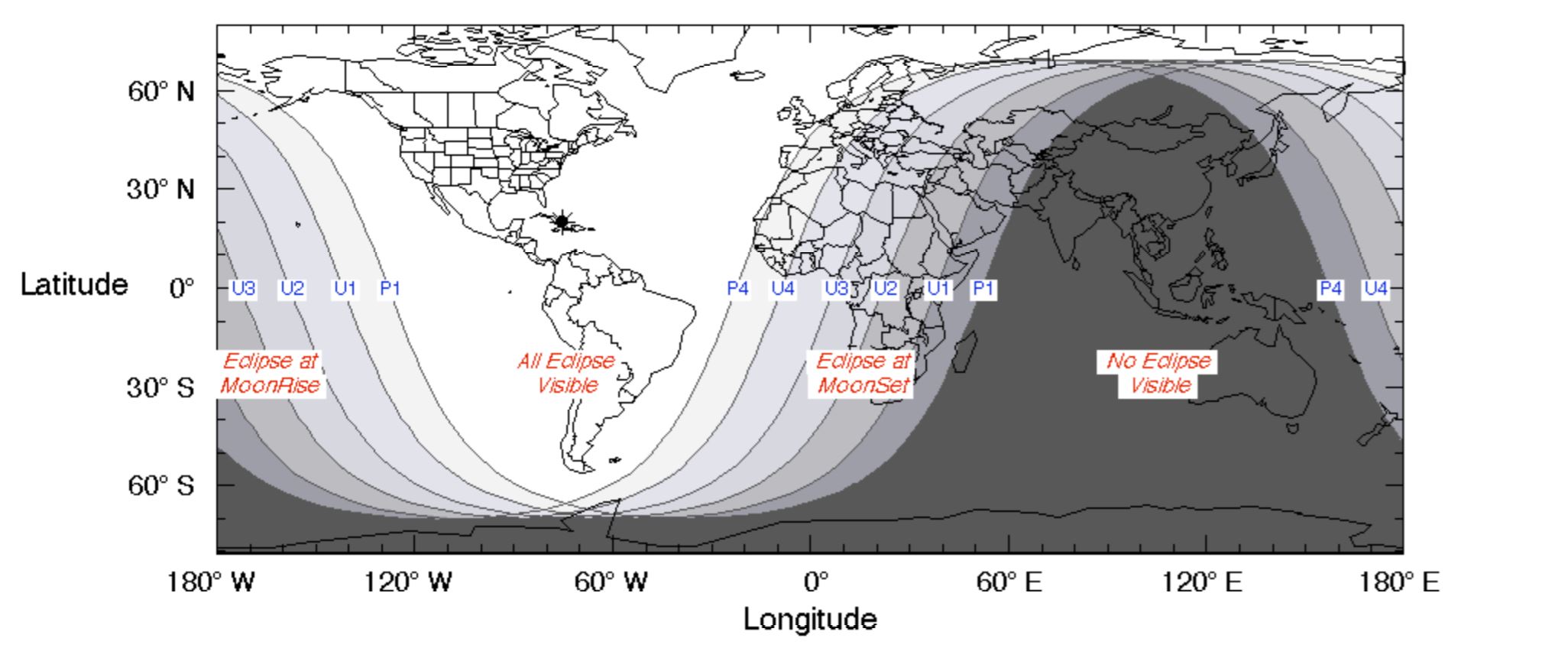Amazing Photos of the Super Blood Wolf Moon of 2019!
Maximum Eclipse
The moon glows red at the peak of the total lunar eclipse on Jan. 21, 2019 at 12:12 a.m. EST (0512 GMT) in this view from a telescope at the Griffith Observatory in Los Angeles, California.
Blood Moon 2019 Diagram
From Sky & Telescope: If Earth had no atmosphere, the Moon would look completely black during a total lunar eclipse. However, a little red-hued sunlight refracts through the atmosphere and into Earth's umbra, coloring the lunar disk during totality. (Not shown to scale!)
Eclipse in Mobile Apps!
Sunday night will feature a total lunar eclipse visible across all of North and South America. Lunar eclipses are safe to watch without protective eyewear, and they make terrific photo opportunities. Your favorite mobile astronomy app can tell you when the various phases of the eclipse will happen and where in the sky you'll find the moon — which will help you choose the site for your viewing party. Inset: Michael Watson of Toronto captured this image of the partial phase of the Oct. 8, 2014, lunar eclipse.
Find the Moon
You can use your astronomy app to find where the moon will be in the sky during the eclipse. Adjust the app's date and time settings to those corresponding to totality or other stages of the eclipse. Once you're outside, enable your app's compass mode and hold your device up to the sky. Move the device around until the moon appears in the display, and then note the direction and height of the moon. These panels show totality for New York and Los Angeles. The direction, heights and local times are different for the two cities.
Earth Shadow Projection
When objects enter the round umbral shadow (white circle) produced by the Earth's globe, direct sunlight cannot reach them — but reddened light, which has been refracted by Earth's atmosphere, can. The moon's orbit (gray line) is tilted with respect to the ecliptic (yellow line), so it usually misses the shadow. But when the moon is full while it is also near the location where the lines cross, it touches Earth's shadow and a total lunar eclipse will occur. Objects transiting the larger penumbral shadow still receive some sunlight. During maximum eclipse, shown here at 0514 GMT (12:14 a.m. EST), the dramatically reduced moonlight will make some deep sky objects visible, such as the nearby Beehive star cluster and the Great Nebula in Orion's sword.
Astropheric Weather App
Astrospheric is a weather-forecasting app created for skywatchers. The main portion of the display shows the sky conditions (cloud cover, transparency and air steadiness) for the next 48 hours using color-coded boxes for each hour. Above that is a regional map showing the predicted cloud cover for the selected hour. The app also provides a less-detailed weather summary for the upcoming week. You can save several locations and summon their forecasts with a click.
Lunar eclipse diagram
During a lunar eclipse, Earth blocks most of the sunlight that normally reaches the moon. This NASA illustration is not to scale.
Breaking space news, the latest updates on rocket launches, skywatching events and more!
Total lunar eclipse graphic
An illustration of the configuration that produces a total lunar eclipse. The moon is the faint sphere within the dark cone behind Earth.
Jan. 21, 2019 total lunar eclipse graphic
This NASA graphic offers basic details about the Jan. 21, 2019, total lunar eclipse. The red circle is Earth's darkest shadow, the umbra. The thick gray ring around that circle represents the outer portion of Earth's shadow, the penumbra. The thin black rings indicate the position of the moon as it moves through Earth's shadow.
Jan 21, 2019 total lunar eclipse map
A map showing the regions that can view the Jan. 21, 2019, total lunar eclipse.

Hanneke Weitering is a multimedia journalist in the Pacific Northwest reporting on the future of aviation at FutureFlight.aero and Aviation International News and was previously the Editor for Spaceflight and Astronomy news here at Space.com. As an editor with over 10 years of experience in science journalism she has previously written for Scholastic Classroom Magazines, MedPage Today and The Joint Institute for Computational Sciences at Oak Ridge National Laboratory. After studying physics at the University of Tennessee in her hometown of Knoxville, she earned her graduate degree in Science, Health and Environmental Reporting (SHERP) from New York University. Hanneke joined the Space.com team in 2016 as a staff writer and producer, covering topics including spaceflight and astronomy. She currently lives in Seattle, home of the Space Needle, with her cat and two snakes. In her spare time, Hanneke enjoys exploring the Rocky Mountains, basking in nature and looking for dark skies to gaze at the cosmos.
